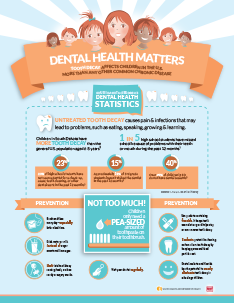Guarantee You Are Prepared For Unexpected Dental Emergencies By Having The Ability To Acknowledge The Signs And Symptoms Of Trauma And Understanding When To Look For Immediate Clinical Focus
Guarantee You Are Prepared For Unexpected Dental Emergencies By Having The Ability To Acknowledge The Signs And Symptoms Of Trauma And Understanding When To Look For Immediate Clinical Focus
Blog Article
Developed By-Silverman Rivas
If you feel a sudden shock of pain or discover a tooth injury, it can be unsettling. However exactly how do you determine if it's a dental emergency situation that requires instant focus? Understanding the crucial indications and understanding when to seek help can make all the difference in maintaining your dental health and wellness. Understanding when to act quickly can indicate the distinction in between a quick fix and much more substantial therapy.
Common Types of Dental Injury
What're the common kinds of dental injury that you should know?
Crashes can occur, leading to different types of oral injuries. One usual kind of dental injury is a fractured tooth. This can take place from attacking down on something difficult or experiencing a blow to the face.
One more kind is a damaged tooth, where a part of the tooth can chip off. Additionally, https://veneers-before-and-after62849.smblogsites.com/30247802/what-to-anticipate-throughout-an-emergency-situation-dental-go-to-a-detailed-guide may experience a knocked-out tooth, which can take place during sporting activities or falls. emergency dentist to manage the tooth meticulously and look for prompt oral attention.
Oral injury can likewise include a tooth that has actually been pushed out of position or loosened because of an injury. This type of injury calls for prompt therapy to conserve the tooth.
Last but not least, soft cells injuries in the mouth, such as cuts, can also occur from mishaps. Learning about these common types of dental injury can assist you act swiftly and suitably in case of an emergency.
Indications of Oral Emergency Situations
Acknowledging the signs of dental emergency situations is important for timely activity and proper therapy. If you experience serious tooth pain that's constant and pain, it could show a hidden problem that needs instant interest.
Swelling in the periodontals, face, or jaw can likewise signify an oral emergency situation, particularly if it's accompanied by pain or fever. Any kind of type of injury to the mouth causing a split, damaged, or knocked-out tooth ought to be treated as an emergency situation to prevent additional damage and possible infection.
Bleeding from the mouth that doesn't quit after using pressure for a couple of minutes is one more red flag that you should seek emergency situation oral care. Additionally, if you see any type of indicators of infection such as pus, a foul taste in your mouth, or a high temperature, it's essential to see a dental professional as soon as possible.
Overlooking these indicators might bring about more severe problems, so it's important to act quickly when confronted with a potential oral emergency.
Importance of Immediate Treatment
Motivate action and immediate treatment are vital in dealing with dental emergencies to prevent further problems and guarantee optimum end results for your dental wellness.
When faced with a dental emergency, such as a knocked-out tooth or serious toothache, seeking prompt therapy can make a substantial distinction in conserving your tooth and easing pain. Delaying treatment can bring about infection, enhanced discomfort, and even irreversible damage to your teeth and gum tissues.
By looking for emergency dental care without delay, you increase the possibilities of successful therapy and remediation. Dental experts have the needed abilities and devices to attend to emergencies properly, reducing the danger of lasting repercussions.
In addition, immediate therapy can aid take care of discomfort and discomfort, allowing you to resume your day-to-day activities without diversion.
Conclusion
To conclude, recognizing dental injury and recognizing when to look for emergency treatment is important for keeping oral health and wellness.
By acknowledging usual types of oral injuries and the signs of oral emergencies, you can make certain timely care to avoid further damages and difficulties.
Keep in mind, seeking prompt treatment can conserve teeth, minimize pain, and raise the opportunities of successful healing.
Don't be reluctant to look for assistance from an oral expert if you experience any type of indications of oral trauma.
